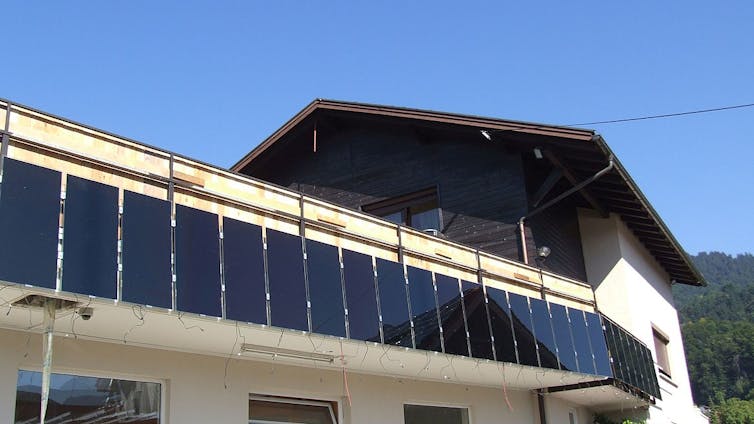Source: The Conversation – UK – By Simon Mabon, Professor of International Relations, Lancaster University
In the past two months, more than 1,000 people seeking food have been killed, according to the UN Human Rights Office. While the figure has been disputed by Israel and the Gaza Humanitarian Foundation which was set up to distribute aid, 28 nations this week condemned the “horrifying” killing of Gazans trying to get food.
As the Israel Defense Forces continues its assault in the city of Deir al-Balah in central Gaza, including an attack on the staff residence of the World Health Organization on July 21, UN bodies are warning that the besieged strip’s last lifelines are collapsing.
Already around 60,000 Gazans have been killed and growing numbers are now dying from hunger and malnutrition, according to the Hamas-led Gaza Health Ministry. More than 90% of the private homes in Gaza have been damaged or destroyed.
For all the talk of a ceasefire – one that is long overdue – there is little hope. Israeli military operations continue and Gazans must risk their lives in search of food and aid.
Sign up to receive our weekly World Affairs Briefing newsletter from The Conversation UK. Every Thursday we’ll bring you expert analysis of the big stories in international relations.
Malnutrition is rife. According to the IPC’s report in May – the international organisation that monitors food security – “goods indispensable for people’s survival are either depleted or expected to run out in the coming weeks” with nearly 500,000 people considered to be facing “catastrophe”, with a further 1.1 million in an “emergency” risk category.
For the IPC, the catastrophe category is one of extreme food shortages, critical malnutrition leading to starvation and high death rates. The emergency category is one of severe food shortages, very high malnutrition and even death.
Israeli officials continue to speak of moving Gazans into what has been termed a “humanitarian city” but what former Israeli prime minister Ehud Olmert described as a “concentration camp”. In the same interview Olmert called decision to move Gazans into the camp as “ethnic cleansing”.
All the while, the world’s leaders look on. Most are apparently content to condemn – but little action has been taken.
The clamour for Israel’s allies to take a harder stance on its actions in Gaza is growing louder by the day. On July 23, a group of 38 former EU ambassadors published an open letter to EU heads of states and senior officials accusing Israel of taking “calculated steps towards ethnic cleansing” and calling out the EU’s failure to “respond meaningfully to these horrific events”.
But what do actions look like? Pressure must be applied to the Netanyahu government. In the UK, both prime minister Keir Starmer and foreign minister David Lammy have been quick to stress that the UK has urged Israel to respect international law.
They point to the sanctions the UK has imposed on Itamar Ben-Gvir and Bezalel Smotrich, two rightwing ministers in Benjamin Netanyahu’s coalition government, as a result of their repeated incitements of violence against Palestinians. While Lammy suggests that further sanctions could follow if Israel does not change its behaviour in Gaza and bring about an end to the suffering, the atrocities continue.
Practical steps to pressure Israel
Pressure is growing on the UK government to recognise Palestine as a state – something that I was told by a contact in the Labour government more than a year ago was on Labour’s agenda before October 7. Lammy insists the government is committed to a two-state solution, but this is not diplomatically viable given that the UK only recognises one state involved in these events.
The state of Palestine is recognised as a sovereign entity by 147 other members of the UN. That’s 75% of all members.
Other steps could be a full arms embargo, something that has long been called for but rejected by the UK government, which has banned some, but by no means all arms sales to Israel. A number of countries have properly banned arms sales to Israel since October 2023, including Italy, Spain, Canada, the Netherlands, Belgium and Japan.
There are other more incendiary options. One would be for the UK and others to properly adhere to their obligations under international law.
The International Criminal Court issued an arrest warrant for the Israeli prime minister Benjamin Netanyahu and his defence minister, Yoav Gallant, in November 2024. There are 125 countries that have signed up to the ICC (the US isn’t one of them). They could arrest Netanyahu if he enters their countries.
There are a range of other things that could be tried. A look at what the international community did to make South Africa a pariah during the later years of apartheid would be worthwhile.
EU should use its diplomatic muscle
As Israel’s biggest trading partner, the EU has the potential to wield considerable clout, so the question must be asked: why has so little been done, beyond mere words.
In June, the EU found Israel to be in breach of its human rights commitments under the terms of the EU-Israel association agreement. Yet to date there have been as yet no moves to suspend trade.
Kaja Kallas, the EU’s foreign policy chief declared that “all options remain on the table if Israel doesn’t deliver” on its pledges. These include full or partial suspension of the EU-Israel Association Agreement, sanctions on members of government, military or settlers, trade measures, arms embargoes, or the suspension of academic cooperation – including the prestigious Horizon Europe Research and Innovation programme.
Of course, getting all 27 member states to agree to such an approach is easier said than done. And national leaders will obviously have to consider that taking steps to put pressure with Israel could damage relations with the Trump administration in the US.
But all the while, the situation on the ground is deteriorating, with the world watching while Gaza burns. The failure by Israel’s allies to take meaningful steps to pressure Israel to prevent the wanton killing and displacement is a stain on humanity.
After the horrors of the second world war, Rwanda, Myanmar and Srebrenica, the world said “never again”. Without action, there’s a risk it will shrug its shoulders and say “never mind”.
Get your news from actual experts, straight to your inbox. Sign up to our daily newsletter to receive all The Conversation UK’s latest coverage of news and research, from politics and business to the arts and sciences.
![]()
Simon Mabon receives funding from Carnegie Corporation of New York and The Henry Luce Foundation.
– ref. Gaza is starving – how Israel’s allies can go beyond words and take meaningful action – https://theconversation.com/gaza-is-starving-how-israels-allies-can-go-beyond-words-and-take-meaningful-action-261783












